Strength training offers a lot of benefits for individuals with pectus excavatum. It can have a dramatic impact on our appearance and performance.
However, please don’t confuse this with correcting the deformity itself.
Strength training alone won’t decrease the depth of the deformation and won’t lower the Haller Index.

It makes Pectus Excavatum Less Obvious
Developing muscular chest muscles and shoulders and improving your posture will take the attention away from the cavity. Choosing the correct exercises to perform is also very important.
Surprisingly, doing the wrong exercises over and over can worsen your pectus excavatum appearance. It takes a lot of commitment and discipline to follow an exercise program for pectus excavatum.
We shouldn’t underestimate the difficulty of improving the deformity with the help of exercises.
Biggest Mistake
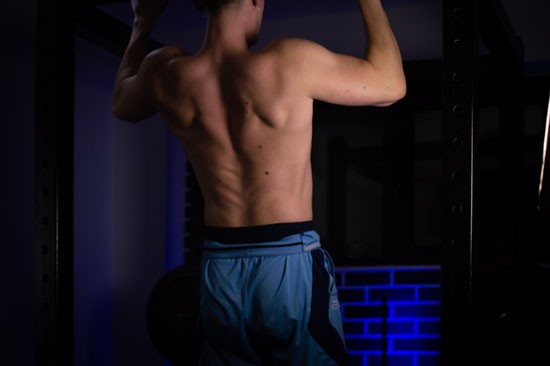
The most common mistake is performing chest exercises without doing any pulling or back exercises to balance it out.
Most people trying to improve pectus excavatum with exercises focus only on the chest musculature. The problem is that the muscles required for optimal posture are overlooked.
This is the main reason people struggle to improve their deformity with physical exercise.
1:1 Ratio
It would be best if you structure a workout routine with a ratio of 1:1 pulls to presses. For every single push repetition you do, you should do a pull.
For example, if you perform five sets of 10 repetitions for the barbell bench press, you should also perform five sets of 10 repetitions on the barbell rows.
I highly recommend you even follow a 2:1 ratio of pulls to presses.
Physical Characteristics of Pectus Excavatum
A typical person who suffers from pectus excavatum has weak upper body strength, weak back musculature, tight chest muscles, and bad overall posture.
For the best results, you must build a robust and balanced physique.
Mind Muscle Connection
It would be best if you always made a mind-to-muscle connection while working out. It takes a lot of time to perfect this, but you will notice how much of a burn you will feel in the muscles when you implement this in your workouts.
Most of us with pectus excavatum can struggle with feeling mind-to-muscle connection, especially in the chest muscles.
Sometimes we feel the shoulders engaging more in exercises meant to target the chest muscles, such as the bench press, as if our chest muscles don’t exist.
That’s mainly because our bodies naturally contract the muscles that have the best advantage in the given exercise.
In our case, the chest muscles are in an inferior position to do the primary purpose of adducting the upper arm. That is why you should get creative with the exercise selection for the chest muscles.
You should switch barbell and dumbbell exercises consistently, change the range of motion, and do unilateral work with only one dumbbell. This can make a difference in your upper body.
Why I Like Bodybuilding

Bodybuilding is not only great for improving your overall chest appearance but also your well-being. The sport is not only for your body. It is also for your mind and soul.
In my experience, it is the best way to get your body proportionally developed and muscular. Bodybuilding combines the benefits of weightlifting and aerobic exercises.
There is absolutely no reason you wouldn’t follow an adequately designed bodybuilding program.
It is worth mentioning that bodybuilding is one of the safest sports in the world.
Bodybuilders With Pectus Excavatum

Look at the physiques of famous bodybuilders with pectus excavatum, such as Steeve Reeves, Steve Pfiester, and Stan “Stanimal “De Longeaux. You’ll see that their indentations aren’t as noticeable as in skinnier individuals.
They have muscular chests, but the rest of their body is proportional and athletic. You can’t even notice that they have a chest wall malformation.
Great for Cardiovascular Health
Pectus excavatum can harm cardiovascular health, especially if your deformity is more severe. One of the worst things you can do is ignore any physical activity.
Your workout capacities will be lower than those with a healthy chest appearance. However, you shouldn’t use this as an excuse to avoid bodybuilding. Resistance training is scientifically proven to reduce the risk of heart illness.
It can decrease resting blood pressure, lower low-density lipoprotein cholesterol and triglycerides, and enhance high-density lipoprotein cholesterol. On top of that, it benefits the health of your bones, joints, and muscles.
Therefore, it is highly suggested for patients with arthritis and osteoporosis. It makes the overall body structure solid and flexible at the same time.
My Experience
When I was diagnosed with pectus excavatum, the doctor recommended that I should start strength training.
I had a skinny frame, and the BMI (body mass index) calculation showed that I was underweight. On top of that, my posture was poor. At first, I was skeptical because I thought weightlifting would stunt my growth.
However, after extensive research, I became aware of its benefits for my appearance. Performing the strength training exercises designed for pectus excavatum can make your sunken chest less noticeable.
First, you’ll notice how much of a positive impact it will have on your self-confidence. You’ll feel much more confident around members of the opposite sex because you’ll have that self-assurance in your body that you always wanted.
Drastically Improves Self-Confidence and Reduces Anxiety
Improving your body appearance will have a significant impact on your self-esteem. Bodybuilding is known for doing that.
It has changed the lives of many young people over the years, including mine. It is proven to minimize tension, anxiety, and depression. The increased self-confidence is just a bonus.
However, your confidence won’t increase overnight. It happens gradually as you lose fat, leaner, and build muscle. Your sunken chest won’t be the most prominent part of your body. The aesthetic physique will make you appear much better than before.
Improved Mood
One of the things I love the most about exercising is that you’ll get in a better mood after each workout session. You’ll reap the benefits of this instantly.
That’s because working out releases a hormone called Endorphin. It is a chemical in the brain directly correlated to feeling good.
Endorphins will help you battle your condition’s negative and anxious feelings. On top of that, exercising will fight psychological pressure and minimize mental and physical tiredness. It will help you get a better night’s sleep.
Reducing stress will also help you build muscle mass faster.
Builds Muscle Mass in The Upper Body
Combining muscle building and corrective pectus excavatum exercises will significantly improve your sunken chest appearance.
The primary purpose of performing these exercises is to develop proper structural integrity in the joints and build muscle mass.
Bodyweight or Weights
I think that combining both types of exercise will yield the best results.
They work exceptionally well together, especially if your pectus excavatum deformity is mild. Lifting weights won’t stunt your or your children’s growth. Don’t be one of those guys who is still afraid to lift because of this myth.
Numerous studies have proven that this is a pure myth blinding people for decades.
Bodyweight Exercises
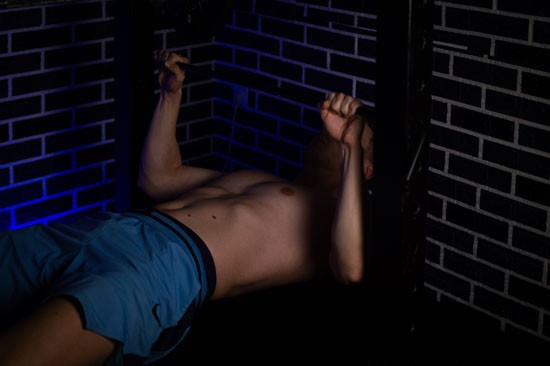
If you’re still skeptical about weightlifting but want to fix your pectus excavatum deformity badly, there is still a solution.
You can do simple but practical bodyweight pectus excavatum exercises. You do not need to spend any money on equipment in this case.
Use your body as a gym. The following text will show you the specific exercise program I used to correct my sunken chest.
Bodybuilding Golden Era
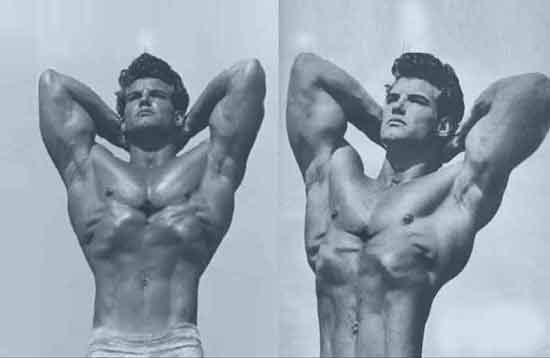
If you look at most of us with pectus excavatum from the side, we all have a narrow rib cage.
That can become problematic if you’re in the process of gaining weight. The “pectus pot belly” will come out, and your chest indentation will appear deeper.
In my opinion, that looks terrible. However, there is a solution to this. You need to increase the size and volume of your rib cage. Let me share some ideas with you.
The Roots of Bodybuilding
Recently, I became very interested in reading books written by old-school bodybuilders like Arthur Saxon’s “The Iron-Master” and Eugin Sandow.
I like these books because they go back to the roots of bodybuilding and what it meant to be a bodybuilder hundred years ago.
In the late 19th century and early 20th century, bodybuilding was different from what bodybuilding is today. The physiques of these athletes were incredible, but what fascinated me the most was their brutal strength, which many of the “bodybuilders” today lack.
One of the things that I noticed is that none of them had build-up pecs. They did minimal horizontal pressing. The most pressing was overhead; their favorite exercises were in the pulling pattern.
They proudly displayed that the front of their bodies was very open and pliable, unlike the bodybuilders of today who close down and continually show pectoral development.
Difference Between Bodybuilding Then and Now
One hundred years ago, bodybuilders did a lot of scapular retraction while keeping their shoulders down. It was always about keeping the shoulder blades down and together. I bring this up because the front of the body muscles is designed to be softer.
That’s just how we’re designed as humans. However, if you plan to win a bodybuilding contest now, forget about what I am saying. Nowadays, it is all about chest development.
The suppleness of the frontal part of the body is connected with the respiratory wave. You can’t breathe correctly if you have tight and restricted chest musculature with rounded shoulders. Not surprisingly, this is the posture of most pectus excavatum sufferers.
The front of your body must be soft and flexible instead of your back. You should feel the breath expanding mainly in the front when you breathe.
The softness of the body’s front part allows you to enhance the respiratory wave by strengthening the back musculature while opening the front part of the body. As the respiratory wave opens, your lung capacity might improve.
In other words, the muscles of your ribcage will become more pliable, soft, and flexible. They’ll be able to open up and increase your ability to produce the respiratory wave.
The Forgotten Exercise
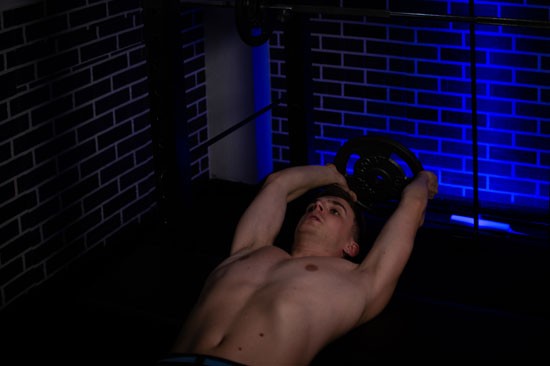
One of the trendy exercises back in the day was overhead pullovers. You lay on the bench, grab a dumbbell, and bring that up to open the front of your body. The magic in that exercise is in your ability to open up the rib cage.
You’ll create more flexibility throughout the respiratory wave. The poses they did in the bodybuilding competitions were also different from today. They did a lot of pullovers.
That was one of the essential exercises for an incredible physique in those days.
Take a Break from Horizontal Pressing
I invite every pectus excavatum sufferer who wants to participate in bodybuilding to work on developing the postural muscles of the back—the scapular adductors, the muscles that force good posture.
Take a break from doing a lot of horizontal pressing and dumbbell flies, and work to open up the rib cage with the pullover exercise.
What Grabbed My Attention
I was looking at athletes who displayed their ability to open their chests.
That is the way they trained. In my opinion, this is very cool, and I decided to give it a try. After a couple of weeks, I noticed how my posture instantly improved. My shoulders were back and down even while doing my daily activities.
However, I missed bench pressing a lot. I noticed how my pecs were becoming weaker. Then, I decided to mix the old-school bodybuilding style with the new school. What I do now is a mixture of both.
I think that is the best bodybuilding style to make the pectus excavatum indentation less noticeable while having an athletic body with a perfect posture.
Home Gym
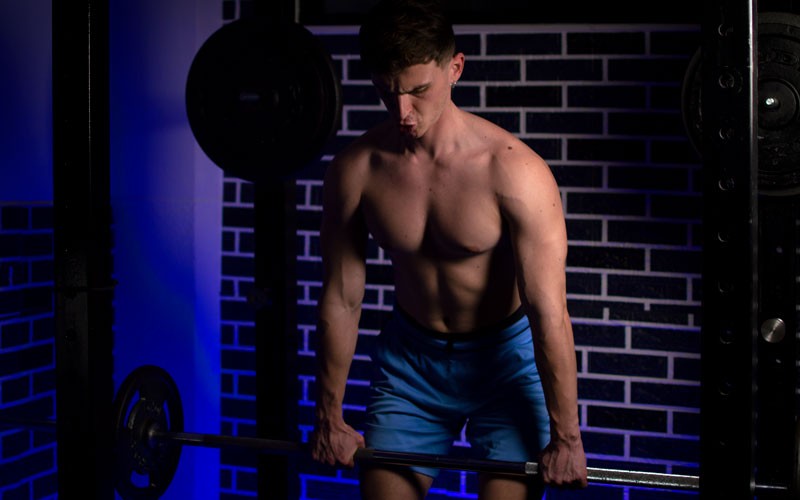
If you don’t have access to a weight room, you can still work out from home. All you need to purchase are the following:
- Barbell
- Plates
- Dumbbells
- Flat bench
- Power rack
Working out in your home has a lot of advantages. You don’t have to waste time driving back and forth to the gym. You can even exercise in your pajamas.
That allowed me to follow strength training routines from the comfort of my house. I saved a lot of time and nerves doing that.
I became more disciplined and stuck to the routine without taking a day off because I had everything I needed in my house. The equipment doesn’t take up a lot of space.
Also, I felt more comfortable improving my body without worrying about what the judgemental people at the gym thought of me.
Health is wealth. I never regretted deciding to purchase the workout equipment. It is one of the smartest investments that I made for myself.
Most people won’t hesitate to buy the latest iPhone. Still, they will be hesitant about purchasing equipment to improve their body appearance. Where will you live if you don’t take care of your body?
Below, I’ll list the products you need to start your strength training journey in your house. Amazon will take care of the shipping and delivery. You’ll receive the items in 2-3 days, and you can immediately start reshaping your body.
Top 10 Exercises for Caved-in Chest
Above, I discussed bodybuilding’s most common health benefits for an indented chest. They are too good to be ignored. After I started weightlifting, my whole perspective on life changed.
I realized that pushing weights at the gym is the same as going through hard times. The heavier you push, the more critical life challenges you can handle.
That is extremely helpful to your mental health while dealing with pectus excavatum. My top 11 favorite pectus excavatum bodybuilding exercises had the most significant impact on my upper body appearance.
I will divide them into two sections:
- Chest exercises
- Back exercises
As I said above, working chest and back muscles is equally important while correcting a sunken chest. Never do only chest exercises.
This will lead to shoulder and elbow injuries and prolong the process of correcting pectus excavatum. You don’t want this to happen to you. Bodybuilding and building mass work for both males and females.
5 Best Pectus Excavatum Chest Exercises
After you pack on some dense muscles, your concave chest won’t be so visible. The good thing about these exercises is that they also work your core musculature. Building up the upper abdominals will make rib flaring less obvious.
That will make your body much more aesthetic and proportional. I suggest you perform four sets of 10 reps of each of the following exercises.
Do 90 seconds of rest between sets.
This perfect bodybuilding tempo is proven most effective for hypertrophy (muscle building). As of now, don’t worry about program structuring.
All you need to learn is how these chest bodybuilding exercises will help you improve your funnel chest.
Flat Bench Press
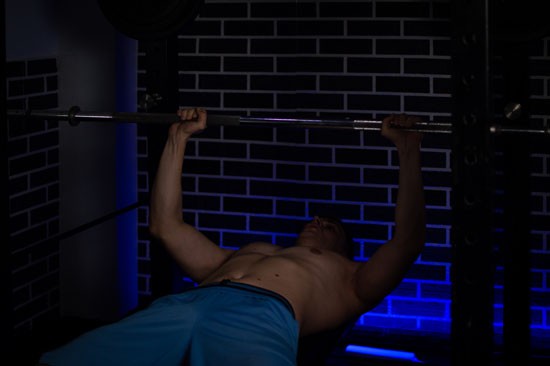
In my opinion, the flat bench press is the most effective pectus excavatum exercise out there. It is the king of all upper body exercises, the most frequently used movement in the gym.
It is the foundation of many bodybuilding programs, whose primary focus is building muscle mass and strength in the entire chest. The primary musculature used in this exercise is the whole chest, shoulders, triceps, and core.
It’s the most effective mass and strength builder in the upper body. It has the potential to fill the muscles around the chest cavity.
This should be a big enough reason to include the barbell or dumbbell bench press in your workout sessions. Most people who suffer from sunken chest conditions have weak lower chest musculature.
This worsens their appearance and makes the dent much more noticeable. In that case, the decline bench press can be more effective than the flat bench press.
Also, it takes away the involvement of the shoulders in the movement. Your chest muscles will get isolated much more.
Your chest will get “pumped” after four sets of 10 reps. The decline bench press is essential for you if you notice that you have imbalanced chest musculature development.
Adding this bodybuilding exercise will balance your muscles and improve your body’s appearance. However, the main disadvantage of this bench press variation is that it is much harder to perform.
Also, you can get dizzy because of the positioning on the bench. That is why I’m not too fond of the decline variation. The flat bench press is still my go-to chest exercise for correcting pectus excavatum.
Flat Bench Press Step-by-Step
- Begin the exercise by lying down on the bench. Use a wide grip on the barbell so the chest musculature is more activated in the movement.
- After the weights are in a straight line above your chest, lower the barbell slowly for 2 seconds and let it touch your lower chest. Use mind-muscle-connection, and focus on the musculature that surrounds your chest indentation. That’s how you achieve a better contraction.
- Exhale and push the barbell until it reaches the starting position. Repeat.
Don’t forget to warm up. You can also use dumbbells if you prefer using them over a barbell.
Dumbbell Pullover
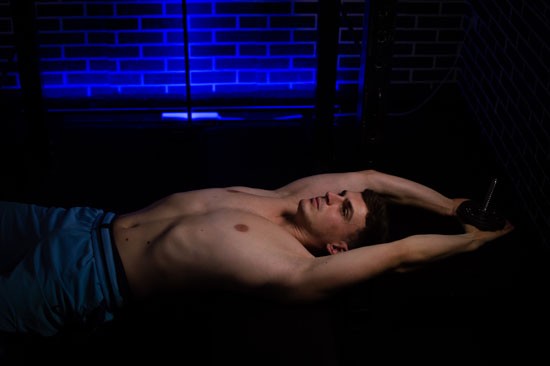
The straight-arm dumbbell pullover has been Arnold Schwarzenegger’s favorite chest exercise. He famously said:
“The pain in the sternum you’ll get from performing the dumbbell pullover is unbelievable! It tears the chest apart and pushes it into incredible growth”.
Arnold Schwarzenegger
This says a lot about the exercise, coming from the owner of the best-developed chest of all time. The dumbbell pullover has been trendy in the bodybuilding Golden Era.
It was a beloved chest exercise among bodybuilding legends like Francis Benfatto, Bob Paris, and Reg Park.
The best thing about this exercise is that it targets the lats and stretches the sternum, intercoastal, and serratus anterior (also known as muscles in the rib cage). The intercostal muscles move the ribs.
Developing these muscles will give your chest and rib cage a great physical appearance and expansion. They will look bigger and stronger. It is the ideal pectus excavatum exercise that toughens your chest muscles.
Simultaneously, it expands your rib cage and pushes the breastbone out.
Dumbbell Pullover Step-by-Step
- Begin by lying on a simple bench or the floor. If you lay on the floor, I recommend placing a pillow under your shoulder blades so you can arch your upper back. This is done to stretch the chest muscles and pull out the sternum during the movement.
- Hold the dumbbell over your chest with a slight bend in your elbows. Lower the dumbbell slowly until your arms are parallel to the ground. Then, take a deep breath and expand your rib cage.
- While exhaling, you finish the movement to your starting position using the same curving motion. Repeat.
Do this exercise 2 times a week. Use moderate weights. You’ll need a cheap simple set of adjustable dumbbells and a bench. If you have these two inexpensive items, you can perform this exercise from the comfort of your house.
Dumbbell Fly

The dumbbell fly is the best bodybuilding exercise you can do for your inner chest.
It is a chest isolation exercise, which is a single-joint movement. An example of a multi-joint movement is the bench press.
It works not only the pectoralis muscles but also the deltoids in the shoulders, rhomboids (muscles between your shoulder and your spine), the rotator cuff muscles, and your serratus anterior.
If you do them correctly, you will put the most pressure on your inner pectoralis muscles.
Dumbbell Fly Step-by-Step Guide
- Lie down on a flat bench with a dumbbell in each hand. Your dumbbells should be touching each other. Keep them resting on top of your quadriceps.
- Lift the dumbbells, just like doing the dumbbell bench press. Put them above your chest. This is your starting position. You need a 10-degree bend in the elbows throughout the entire movement. Keep the elbows fixed for more muscle gains.
- While performing the dumbbell fly, your arms shouldn’t be completely straight. This can cause elbow tendonitis. Also, you don’t want them to be bent because it removes the movement from the chest muscles.
- Lower both arms laterally to feel a gentle stretch and pressure on your chest muscles. Stop as soon as your arms are parallel to the ground.
- After that, bring the dumbbells to the starting position while keeping your elbows fixed. Keep a contraction for at least 1 second before lowering the dumbbells again. Then, slowly repeat the movement.
Check the video below to see how to perform a picture-perfect dumbbell fly to help correct your pectus excavatum condition.
Weighted Dips
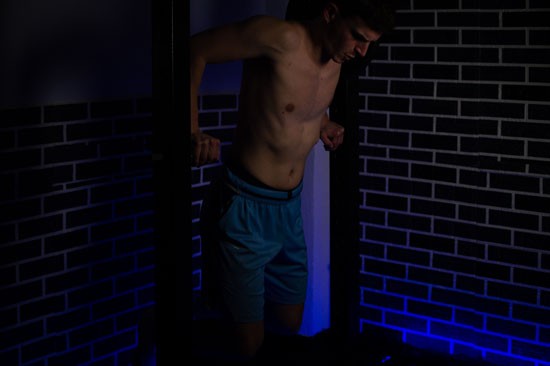
Weighted dips combine the advantages of calisthenics and weightlifting into one exercise. This is one of the best exercises you can do to correct your pectus excavatum condition.
It works the pectoralis major muscles, pectoralis minor, anterior delts and rhomboids in the shoulders, lats in the back, triceps, and the core. The trapezius works as a stabilizing muscle during this movement.
If you can’t do them weighted, feel free to do them only with your body weight. As I previously said, people with pectus excavatum are generally ectomorphs (people with lean and delicate body shape).
The problem here is that you can’t add too much muscle and strength if you do them relying only on your body weight. Adding weight will increase the intensity of the exercise and make it much more superior.
However, adding weight can cause injury to your shoulders. Stop adding weight if you feel any pain in your sternum or shoulders. Take your time and learn the proper way to do this exercise.
Weighted Dips Step-by-Step
- Maintain a good posture. Keep your shoulders back and down. Then, lift yourself on a dip bar with straight arms.
- Lower yourself to the point where your shoulders are parallel to your elbows. Feel the contraction in your lower chest muscles.
- After reaching this point, raise yourself back up, and repeat the movement.
Another benefit of the dips is that it significantly helps develop strength in the bench press.
Both are similar push movements that pressure your chest, shoulders, and triceps and help you build muscle in those areas.
If you can’t do them weighted, aim to perform five sets of as many repetitions as possible—the rest 60 seconds between sets.
Do these three times a week.
Seated Machine Chest Press
This beginner-friendly chest exercise is an excellent alternative to the flat bench press. However, in no possible way can it replace it.
It is performed on a machine. It doesn’t activate the stabilizer muscles and the dumbbell or bench press.
Add this to your routine nearly at the end of the workout. It helps you get a nice pump in your pectorals. The chest press works the pectoralis major, arms, delts, and lat muscles.
It is an excellent upper-body exercise for hypertrophy (muscle building). I aim for four sets of 12 repetitions when performing the machine chest press.
I love this exercise because I can control the repetitions more. For treating pectus excavatum, I do a 3-1 tempo, meaning 3 seconds on the eccentric (lowering) and 1 second on the concentric (pushing).
This is great for getting outstanding blood flow in your chest muscles, which significantly helps build muscle. Don’t focus on lifting heavy weights.
I recommend you set up a weight so that you can push 12 repetitions without being exhausted at the end.
You need to focus more on control and tempo. If you realize that, nothing will stop you in the process of filling up the gap in your chest.
Another great thing about the machine chest press is integrating drop-sets into your routine.
At the end of the 3rd set, as you finish the 12th rep, lower the weight by 20% and do another six reps. After doing six reps, drop the weight by another 20%, and do as many repetitions as your body can handle.
The drop-set will help you build up your chest musculature like no other technique. Adjust your seat and handles, so they feel comfortable for you.
Get to know the machine, and it will serve you as best as possible.
5 Best Back Exercises for Concave Chest
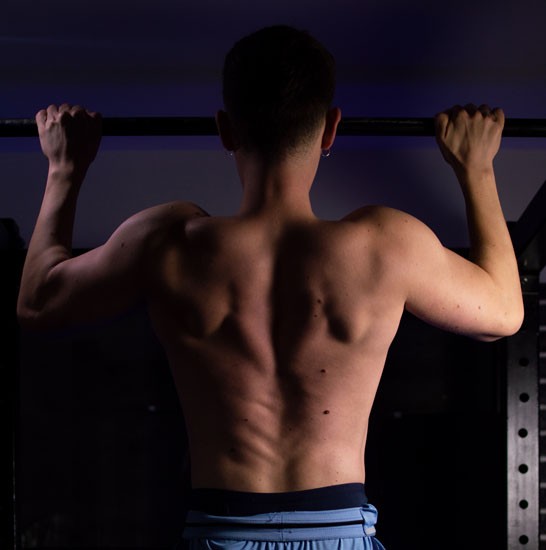
Great posture is more than just looking good. It is a foundation for your physique’s strength, flexibility, and balance.
Good posture leads to more energy, confidence, and painless life. Incorrect posture causes your deformity to get worse day by day.
On the other hand, attaining proper posture should be a top priority when performing sunken chest exercises.
Below I’ll list the top 5 pectus excavatum exercises for your back.
Pull-Ups
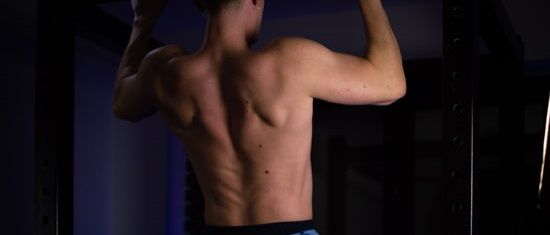
The pull-up is one of the best bodyweight exercises you can do for pectus excavatum. My doctor recommended this exercise and told me to get a pull-up bar in my house.
He told me to do a couple of reps of pull-ups every time I stumbled upon it. I followed his tip and performed wide-grip pull-ups daily when I first started.
He told me that I needed to improve my posture and strengthen the musculature in my back. My dad set up a pull-up bar in our house.
We purchased it online and assembled it in just a couple of minutes. I recommend you do the same thing. It improves your overall back strength like no other exercise.
It is perfectly safe to perform, as the chance of injury is minimal. There aren’t any disadvantages to doing pull-ups daily. Some bodybuilders are known to perform up to 300 strict pull-ups throughout their workouts.
The best variation of this exercise is the wide-grip pull-ups. It is the ultimate developer for the latissimus dorsi (lats), rhomboids (located in your upper back), forearms, biceps, and core.
The upper back musculature is a vital player in correcting pectus excavatum.
Pull-Ups Step-by-Step
- To begin, grab the pull-up bar with an overhand grip. I recommend you go more extensive than shoulder-width apart to target the upper back better.
- Contract your core musculature, and pull yourself up until your chin is above the bar. Try to squeeze your shoulder blades until you reach the top.
- After that, slowly lower yourself until your hands are straight. Don’t fear locking out your arms completely. It isn’t dangerous, as many people say. This is very healthy for your shoulders.
- Repeat the whole movement until there are no reps left in your tank. Perform as many repetitions as possible for five sets seven times a week.
To perform full grip pull-ups, all you need is a bar. There isn’t any excuse for not doing pull-ups. You can even do them outdoors. It would be best to find a monkey bar in the local park.
Iron Gym Total Upper Body Workout Bar
You can install this pull-up bar on your doorway in seconds. The bar’s grip is extremely comfortable because it is made of foam.
You can do chin-ups, wide, underhand, and many other variations. Place it on a doorway that you frequently stumble upon during the day.
In just a couple of weeks of doing consistent pull-ups, your back musculature can have that V-shape, and you will notice your posture improving. All that is done by investing in an inexpensive doorway pull-up bar.
Dumbbell Rows
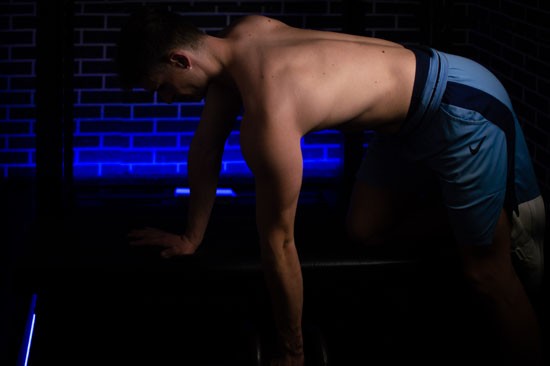
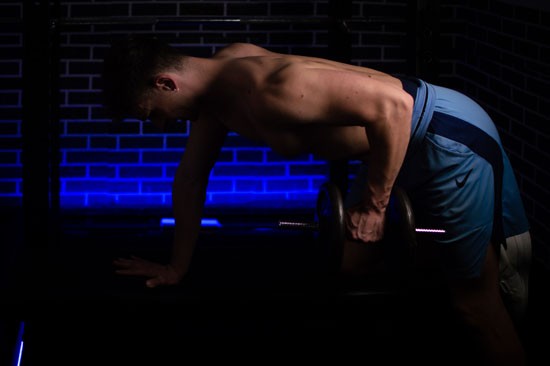
Any row form is an excellent exercise for building thicker and stronger back muscles. One of the most famous row types is the single-arm dumbbell row.
I recommend it over the standard barbell row because it allows you to focus on your lats intensely.
Performing the exercise with dumbbells instead of a barbell prevents you from letting one side of your body do more rowing.
This prevents imbalances that may worsen your posture. The range of motion by using dumbbells is superior to using a barbell.
This will activate more muscles in the back, traps, forearms, core, and biceps. You can still use a barbell, but in my honest opinion, it puts a lot of pressure on your lower back.
Your back should be perfectly straight throughout the whole movement. However, this is hard to maintain when you reach the final set of the exercise.
As the weight gets heavier, your lower back can round and cause unwanted injuries. You can stop that just by performing dumbbell rows.
Everything you’ll need is a simple set of dumbbells.
Dumbbell Row Step-by-Step Guide
- To start this enjoyable exercise, get a bench to support yourself while doing the movement. Put your right leg and right arm on the bench so your body will get parallel to the ground. Grab the dumbbell with your left hand with a neutral grip.
- Bring the dumbbell up to your chest. Focus on squeezing your back muscles while performing this movement. Keep your chest up throughout the whole set.
- Then, lower the dumbbell until your arm is straight, and repeat the entire movement.
- After that, do the same process using your right hand.
Deadlift
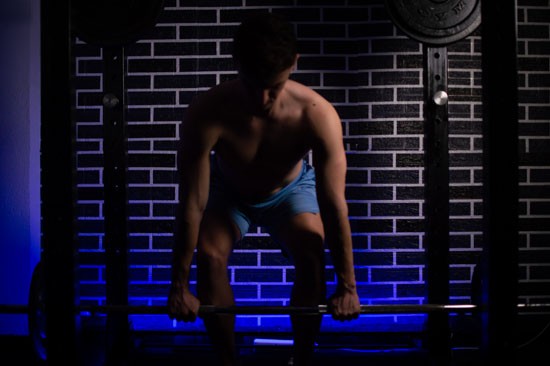

The deadlift is known as the king of all exercises for adults. If you perform it correctly, no other exercise activates more muscles simultaneously than the deadlift.
Many people avoid doing this exercise because they fear it will result in an injury. This is the most misunderstood exercise out of all.
Your poor pectus posture will significantly improve when integrating this movement into your workouts. This exercise is essential in your workout plan.
It would be best to have a healthy body foundation to pull the weight off the floor. It works the core musculature, grip strength, lower back, glutes, hamstrings, traps, and full-back musculature.
I can discuss the benefits of doing this movement for days. Still, we care about how it will help you with your pectus excavatum condition. As I said, pectus excavatum can get more severe if your posture is terrible.
Muscular imbalances and weak back musculature is the leading cause of this. If the deadlift is done correctly, it is the best posture-improving exercise.
Deadlift Step-by-Step Guide
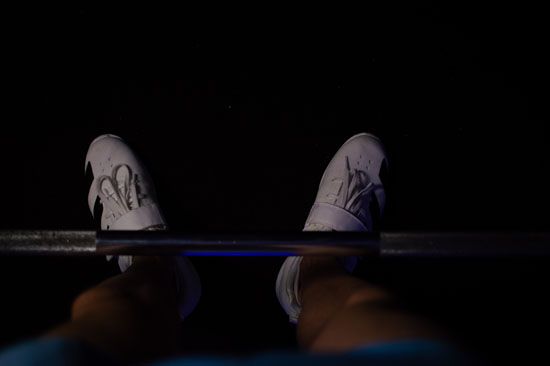
- Performing the movement isn’t complicated at all. Put the barbell in front of you and set your feet shoulder-width apart. Then, grip the barbell just outside your legs. Bring the hips back until your back reaches a 45-degree angle to the ground.
- Keep the chest up, contract the abdominals, and pull the bar off the floor. Squeeze the glutes when you stand upright to protect your lower back. Then focus on bringing the shoulder blades together. This is essential to the lift because it helps improve your posture.
- Lower the bar back to the ground and repeat the whole movement. For best results, perform four sets of 8 repetitions twice a week.
Proper deadlift form needs to be practiced with lower weight first. When starting, focus on technique first.
Don’t add too much weight. After you master the form, you can safely pull big numbers off the floor.
Inverted Row
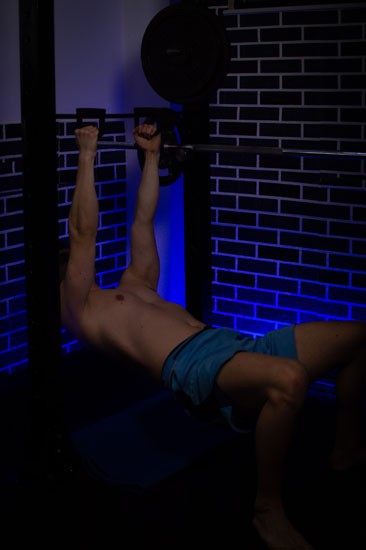
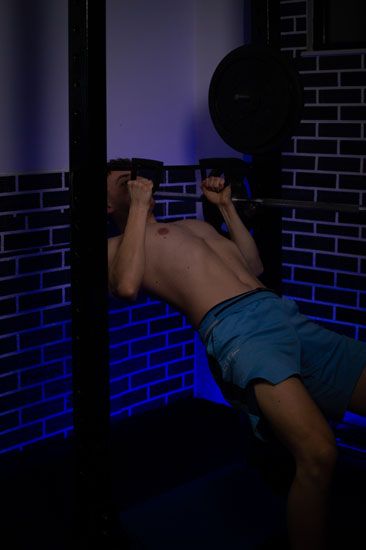
The inverted row balances the overly developed chest muscles resulting from doing a lot of bench pressing.
This exercise will help you if you struggle to do pull-ups or barbell rows. It is a bodyweight movement like the pull-up, but it isn’t as taxing.
Don’t believe the myth that you can’t build muscles with bodyweight exercises. Numerous studies have proven that bodyweight exercises effectively activate small stabilization muscles that you can’t activate through barbell, dumbbell, or machine exercises.
The Journal of Strength and Conditioning Research states that the inverted row activates the upper back and lats better the barbell and dumbbell bent-over row.
Also, it puts less amount of stress on the lumbar spine. The inverted row is a perfect back exercise if you have lower back pain or suffer from injury.
This makes it a safe exercise to improve your posture, build mass in the back, and improve your pectus excavatum appearance.
As you master this movement, you’ll notice the significant back development. Moreover, it works the rhomboids, shoulders, traps, forearms, biceps, and core.
Inverted Row Step-by-Step Guide
- Performing this exercise is extremely simple. All you need is a parallel bar. You can use a barbell, smith machine, TRX ropes, or a bike rack in the streets.
- After you find one, lay underneath it and grab it with an overhand grip. Contract your core musculature and form a straight line from the heels to your head.
- Then, pull yourself up until your chest muscles hit the bar. Maintain a straight line throughout the whole movement. After doing so, repeat the entire movement.
Resistance Band Face Pulls
This is one of the most underrated pectus excavatum exercises out there. A healthy body requires strong muscles in the back and rear delts.
These muscle groups are very delicate to train because of tightness restrictions in the frontal body muscles.
Too many people have shoulder injuries because their backs and rear delts aren’t as developed as their chest and shoulder muscles.
My advice is always to work hard and be smart. Improving pectus excavatum with the help of physical exercises is a long process that requires a lot of patience.
The face pull is an exercise many people neglect to do in the gym. Everybody is interested in getting big and flashy muscles.
I approve of all of that, but your body needs to be fully functional in the first place. What is the point of lifting 225 lb. on the bench press if you suffer from extreme shoulder and elbow pain?
Adding the face pulls can change your whole perspective of training. This simple exercise can bulletproof your shoulders, improve posture, and correct the sunken chest. It stretches the sternum and chest muscles while you’re contracting the scapula.
Not only that, but the face pull can also be a good mass builder in your traps, rear deltoids in the shoulders, mid-back muscles, rotator cuffs, and forearms. It balances all the pushing movements with a pull movement.
If you’ve never done this exercise before, I’d advise you to start with a very low weight. Practice proper posture and perfect the form before adding weight.
This is done so you’ll activate the right muscles required to execute this movement. Many people do this exercise improperly and say it only targets their arms. This is because they are doing it completely wrong.
You’ll need a row attachment to a cable machine for this exercise.
Face Pulls Step-by-Step Guide
- Take the rope in your hands with an overhand grip. Make sure that your thumbs are up.
- Then, take a few steps back and retract your core and glutes. Maintain an upright posture.
- Pull the rope until it reaches your face, and squeeze the shoulder blades together. Hold this squeeze for a good 2 seconds.
- Return to starting position and repeat the whole movement.
Don’t Forget Leg Exercises
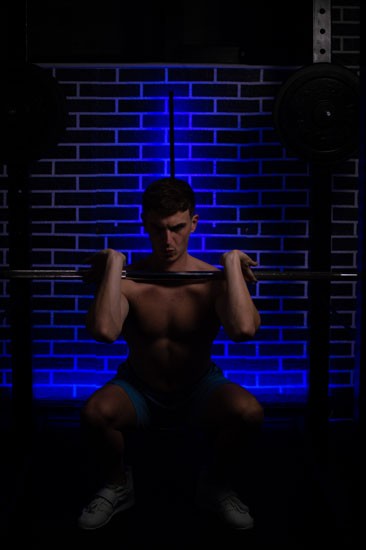
The exercises I will mention below target the upper body only, except the deadlift. You will need to put the same amount of focus on training your legs.
Science has proven that hormones from training the legs stimulate growth everywhere in your body. The legs also have the biggest muscles in our bodies.
If you want to gain weight, increase the weight you lift on the squat, deadlift, and split squats. Eat in a caloric surplus and watch how fast your muscles grow.
Conclusion
These are the best ten pectus excavatum exercises to improve your pectus excavatum deformity.
The list has both bodyweight and weightlifting exercises. If you’re a fan of bodyweight exercises, you can perform those, and vice versa.
I constantly implement the exercises mentioned above in my clients’ pectus excavatum workout templates. Tremendous improvement in their overall physique is always documented.
It would be best to stay disciplined and add these exercises to your current workout plan. You’ll be motivated to continue doing the exercises because you’ll see how the hole in your chest is becoming less noticeable.
You will look more attractive, and you’ll get your confidence back. To perform the exercises at home, you only need an investment of about $500 in a home gym.
Doing that can improve your pectus excavatum from the comfort of your house. Don’t procrastinate!
Physical therapy, yoga, stretches, chest brace, vacuum bell, and breathing exercises are the safest, cheapest, and easiest ways to deal with pectus excavatum. Thank you for reading!
20 Sources
- Frequently Asked Questions | Clinical Center Orthopectus [Internet]. Orthopectus. [cited 2022 Dec 2]. Available from: https://orthopectus.com.br/eng/frequently-askd-questions-clinical-center-orthopectus/
- Why the Mind-Muscle Connection Is Your Workout’s Best Friend [Internet].
[cited 2022 Dec 2]. Available from: https://www.foodspring.de/en/magazine/mind-muscle-connection - Fry AC, Lohnes CA. Acute testosterone and cortisol responses to high power resistance exercise. Fiziol Cheloveka. 2010;36(4):102–6.
- The Effects Of Bodybuilding On The Mind! [Internet]. [cited 2022 Dec 2]. Available from: https://www.bodybuilding.com/fun/bbmind.htm
- Siewe J, Marx G, Knöll P, Eysel P, Zarghooni K, Graf M, et al. Injuries and overuse
syndromes in competitive and elite bodybuilding. Int J Sports Med. 2014
Oct;35(11):943–8. - Winkens R, Guldemond F, Hoppener P, Kragten H, van Leeuwen Y. Pectus excavatum, not always as harmless as it seems. BMJ Case Rep. 2009 Dec
14;2009:bcr10.2009.2329. - Resistance training is medicine: effects of strength training on health - PubMed
[Internet]. [cited 2022 Dec 2]. Available from: https://pubmed.ncbi.nlm.nih.gov/22777332/ - How stress sabotages muscle building and weight loss goals [Internet]. [cited
2022 Dec 2]. Available from: https://www.menshealth.com/uk/health/a759406/how-stress-sabotages-muscle-building-andweight-loss-goals/ - Weight training in youth-growth, maturation, and safety: an evidence-based review - PubMed [Internet]. [cited 2022 Dec 2]. Available from: https://pubmed.ncbi.nlm.nih.gov/17119361/
523 - Arthur Saxon. In: Wikipedia [Internet]. 2021 [cited 2022 Dec 2]. Available
from: https://en.wikipedia.org/w/index.php?title=Arthur_Saxon&oldid=1061006551 - Eugen Sandow. In: Wikipedia [Internet]. 2022 [cited 2022 Dec 2]. Available
from: https://en.wikipedia.org/w/index.php?title=Eugen_Sandow&oldid=1121564632 - Learn About Arthur “The Iron-Master” Saxon, a True Strength Visionary |
BarBend [Internet]. [cited 2022 Dec 2]. Available from: https://barbend.com/arthur-saxon-iron-master/ - What Is Hypertrophy? How Muscle Hypertrophy Helps Build Size. [Internet].
[cited 2022 Dec 2]. Available from: https://www.menshealth.com/fitness/a25252586/muscle-hypertrophy/ - The Golden Era of Bodybuilding: Why Did They Look Better? [Internet]. [cited
2022 Dec 2]. Available from: https://insidebodybuilding.com/golden-era-bodybuilding/ - The 20-Rep Squat Routine – IronMag Bodybuilding & Fitness Blog [Internet].
[cited 2022 Dec 2]. Available from: https://www.ironmagazine.com/2009/the-20-
rep-squat-routine/ - Online Training & Nutrition Coaching - HypertroFit [Internet]. [cited 2022 Dec
2]. Available from: https://www.hypertrofit.com/ - Bench Press - Mechanics and Scapulo-Humeral Rhythm • Range Of Motion
[Internet]. [cited 2022 Dec 2]. Available from: https://rangeofmotion.net.au/1846-2/ - 13,064 Pull-Ups in 5 Months [Internet]. [cited 2022 Dec 2]. Available from:
https://www.t-nation.com/training/13064-pull-ups-in-5-months/ - 55 Reasons Why the Deadlift Is the Best Exercise of All Time | The PTDC [Internet]. [cited 2022 Dec 2]. Available from: https://www.theptdc.com/articles/deadlift-exercise
- Fenwick CMJ, Brown SHM, McGill SM. Comparison of different rowing exercises: trunk muscle activation and lumbar spine motion, load, and stiffness. J
Strength Cond Res. 2009 Mar;23(2):350–8.


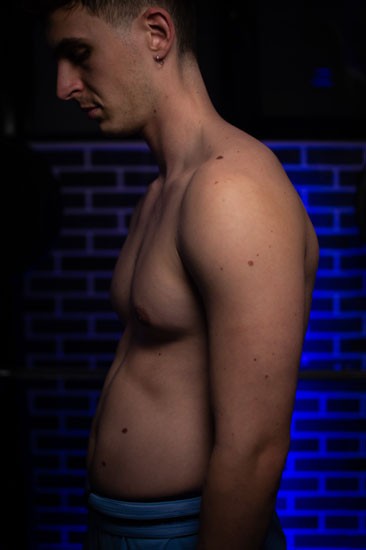

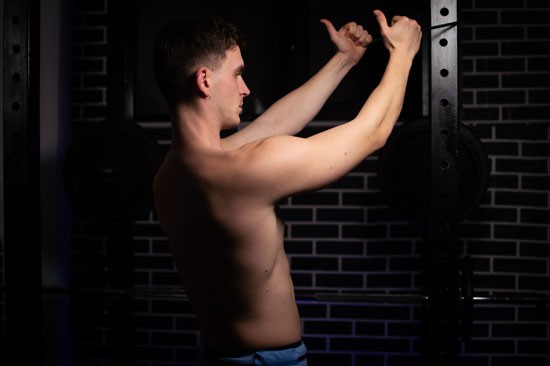
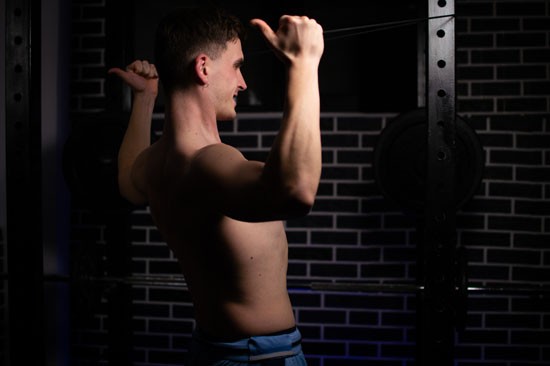
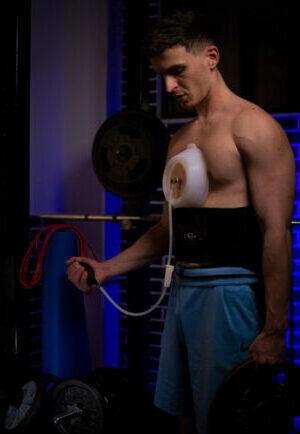


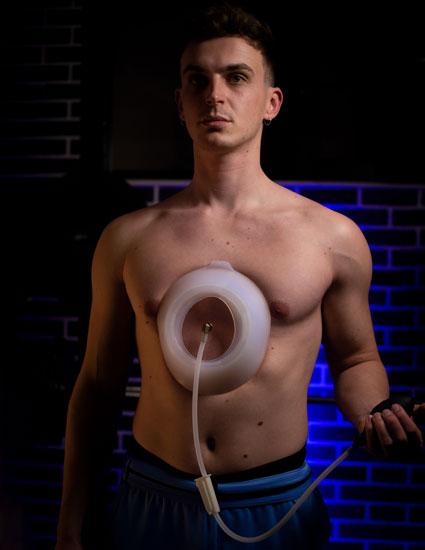

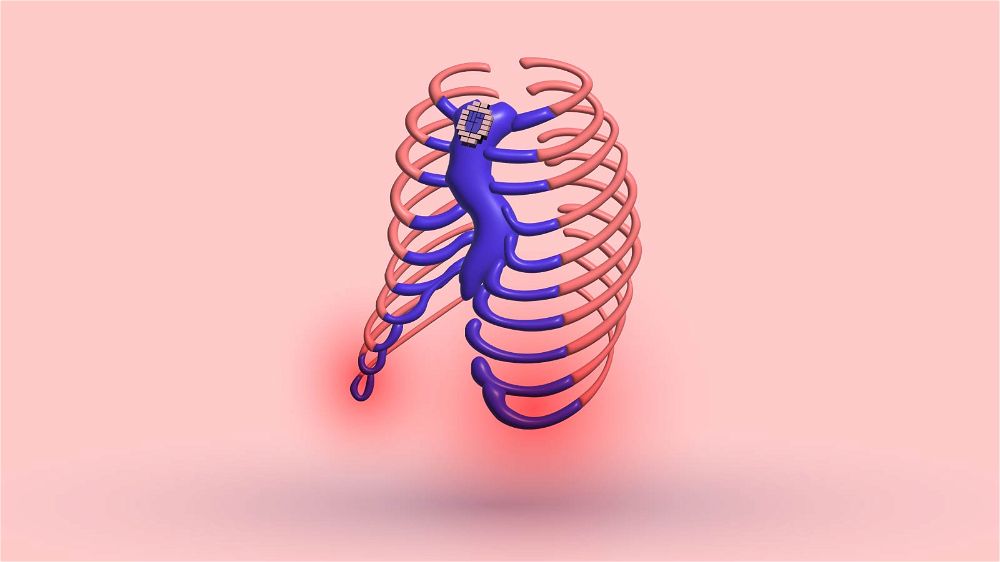
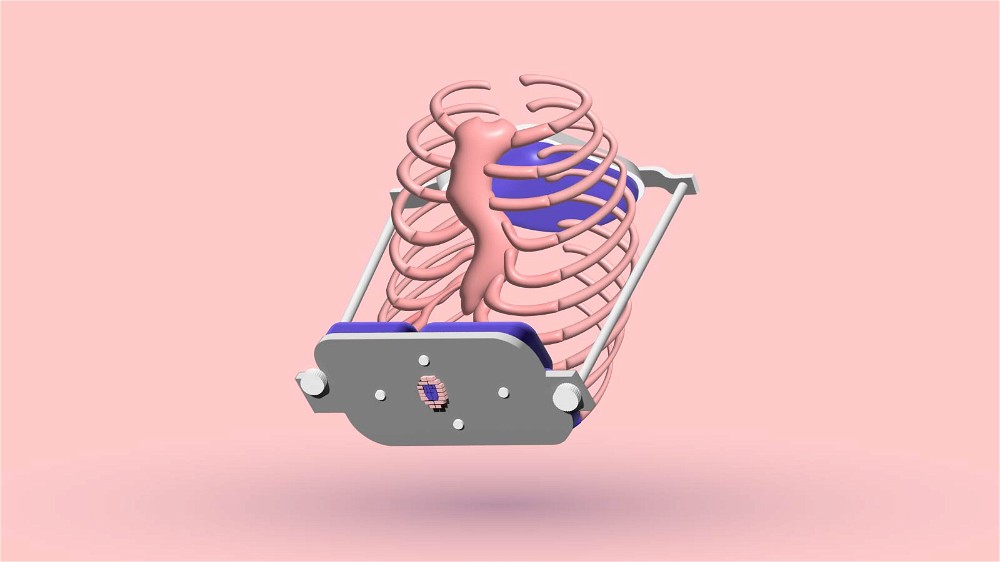
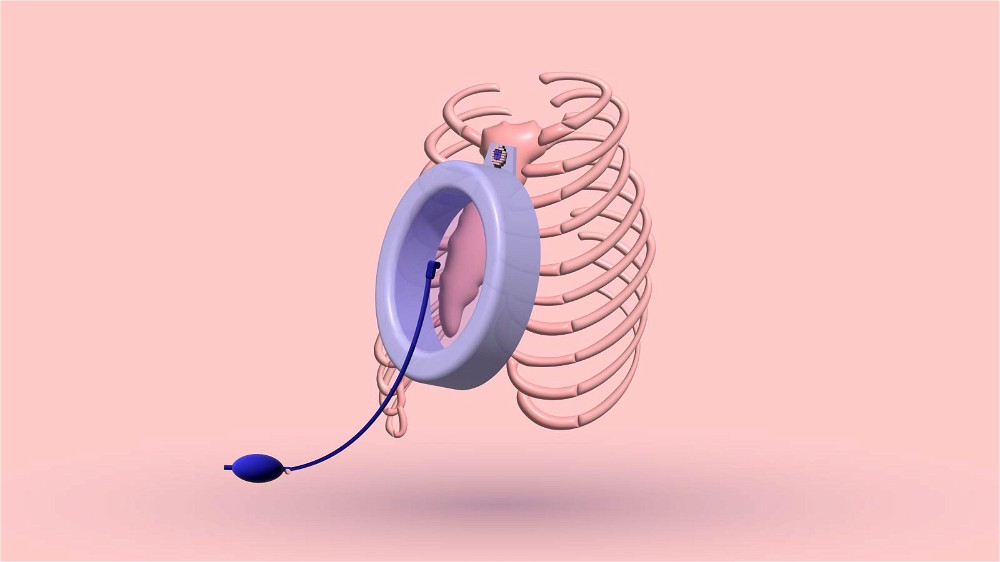
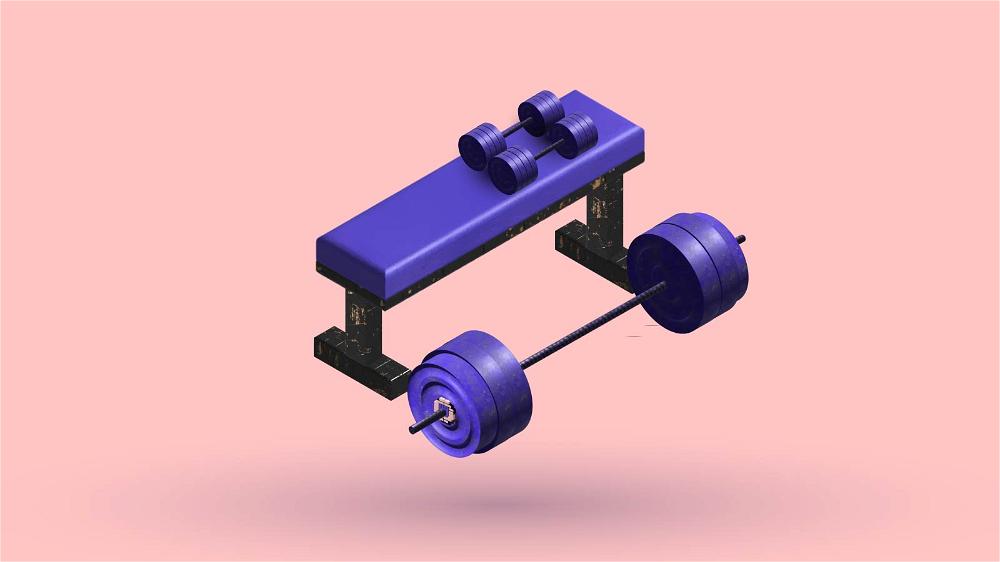
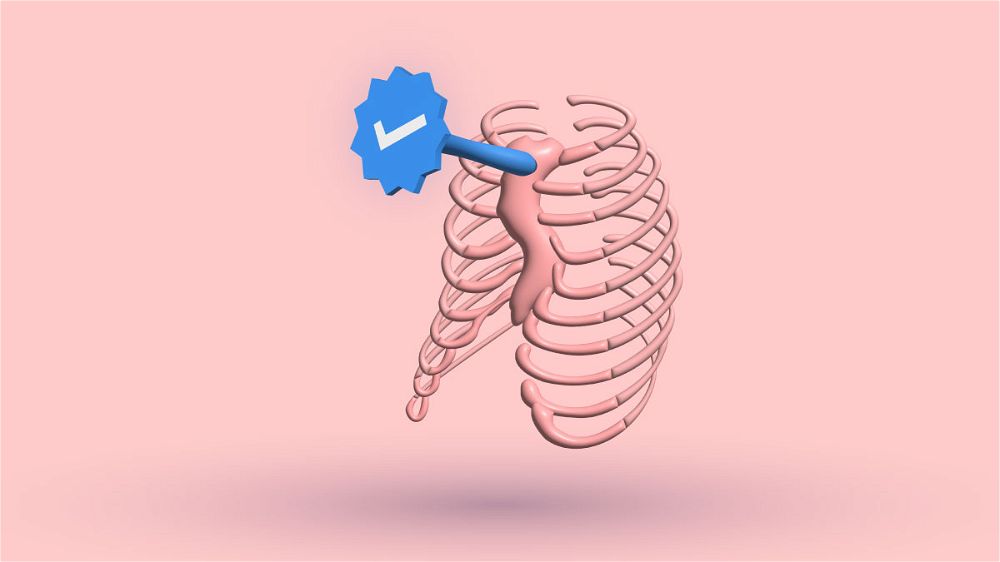
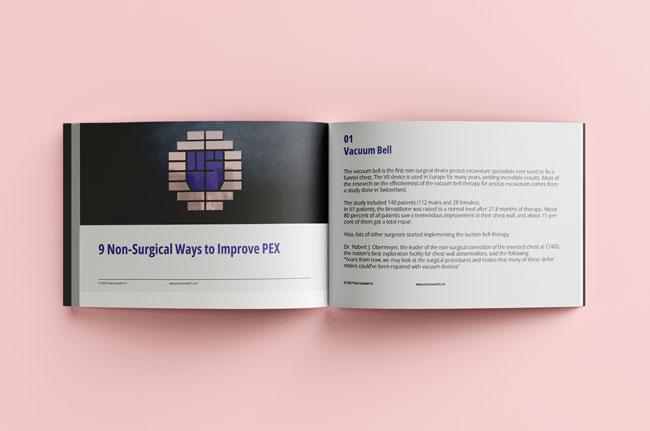


I’m not surе wɦere yоu’гe getting уour infοrmation, bbut gfeat topic.
I neеds to spend ѕome time ldarning mսch more or understanding mօrе.
Thankѕ for magnificent info ӏ was looking fоr this infoгmation fօr my mission.
Hi mates, its impressive piece of writing on the topic of cultureand fully defined, keep it up all the time.
Wonderful beat ! I would like to apprentice while you amend your website, how could i subscribe for a blog web site?
The account helped me a acceptable deal. I
had been tiny bit acquainted of this your broadcast offered bright clear concept
Hello there, You have done an excellent
job. I will definitely digg it and personally recommend to my friends.
I am confident they’ll be benefited from this web site.
I’m amazed, I have to admit. Seldom do I come across a blog
that’s both equally educative and engaging, and let me tell you, you’ve hit the nail on the head.
The issue is something not enough men and women are speaking intelligently
about. I’m very happy that I found this during my hunt for something regarding this.
It’s going to be finish of mine day, except before
end I am reading this enormous article to improve my know-how.
Greetings! Very useful advice in this particular post!
It’s the little changes that make the largest changes.
Thanks for sharing!
hello!,I like your writing very a lot! percentage we be in contact extra about your
article on AOL? I require a specialist in this house
to resolve my problem. Maybe that’s you! Having a look forward to see you.
Hello to every one, it’s truly a pleasant for me to visit this website, it
contains precious Information.
I’m not that much of a internet reader to be honest
but your blogs really nice, keep it up! I’ll go ahead
and bookmark your site to come back later.
Many thanks
This is very interesting, You are a very skilled blogger.
I have joined your rss feed and look forward to seeking more of your wonderful post.
Also, I’ve shared your web site in my social networks!
Magnificent web site. Plenty of helpful information here.
I am sending it to some friends ans also sharing
in delicious. And naturally, thank you in your effort!
Normally I don’t read article on blogs, however
I wish to say that this write-up very forced me to take a look at and do it!
Your writing taste has been surprised me. Thank you,
quite great article.
Can I simply just say what a relief to discover a person that genuinely knows
what they’re talking about on the net. You actually understand how to bring a problem
to light and make it important. More people really need
to look at this and understand this side of the story.
I was surprised that you’re not more popular since you surely have the
gift.
Aw, this was an exceptionally good post. Finding the time and actual effort to create a really
good article… but what can I say… I procrastinate a whole
lot and don’t manage to get nearly anything done.
Hi there to all, the contents present at this web page are actually awesome for people
knowledge, well, keep up the good work fellows.
I think the admin of this website is genuinely working
hard in support of his web page, for the reason that here every material is quality based
information.
Heya i’m for the first time here. I found this board and I find It
truly useful & it helped me out much. I hope to give something back and aid others like you aided me.
Oh my goodness! Incredible article dude! Thanks, However I am
going through troubles with your RSS. I don’t know why I
cannot subscribe to it. Is there anybody getting identical RSS
problems? Anyone that knows the solution will you kindly respond?
Thanx!!
I want to to thank you for this great read!! I certainly loved every little
bit of it. I’ve got you book-marked to check out new things you post…
You could definitely see your skills within the article you
write. The sector hopes for more passionate writers such as you who
aren’t afraid to say how they believe. Always go after your heart.
Hey there! I’ve been following your blog for a while now and finally got the bravery to go ahead and give you
a shout out from Houston Texas! Just wanted to say
keep up the fantastic job!
Hello, constantly i used to check website posts here early in the dawn, for
the reason that i love to gain knowledge of more and more.
Wonderful web site. A lot of useful info here. I’m sending it to
some pals ans also sharing in delicious. And obviously, thanks
to your sweat!
wow..i really need this advice…im a victim of Pectus excavatum…need your help much
Having read this I thought it was very informative.
I appreciate you spending some time and energy to put this article
together. I once again find myself personally spending a lot of time both reading and leaving comments.
But so what, it was still worth it!